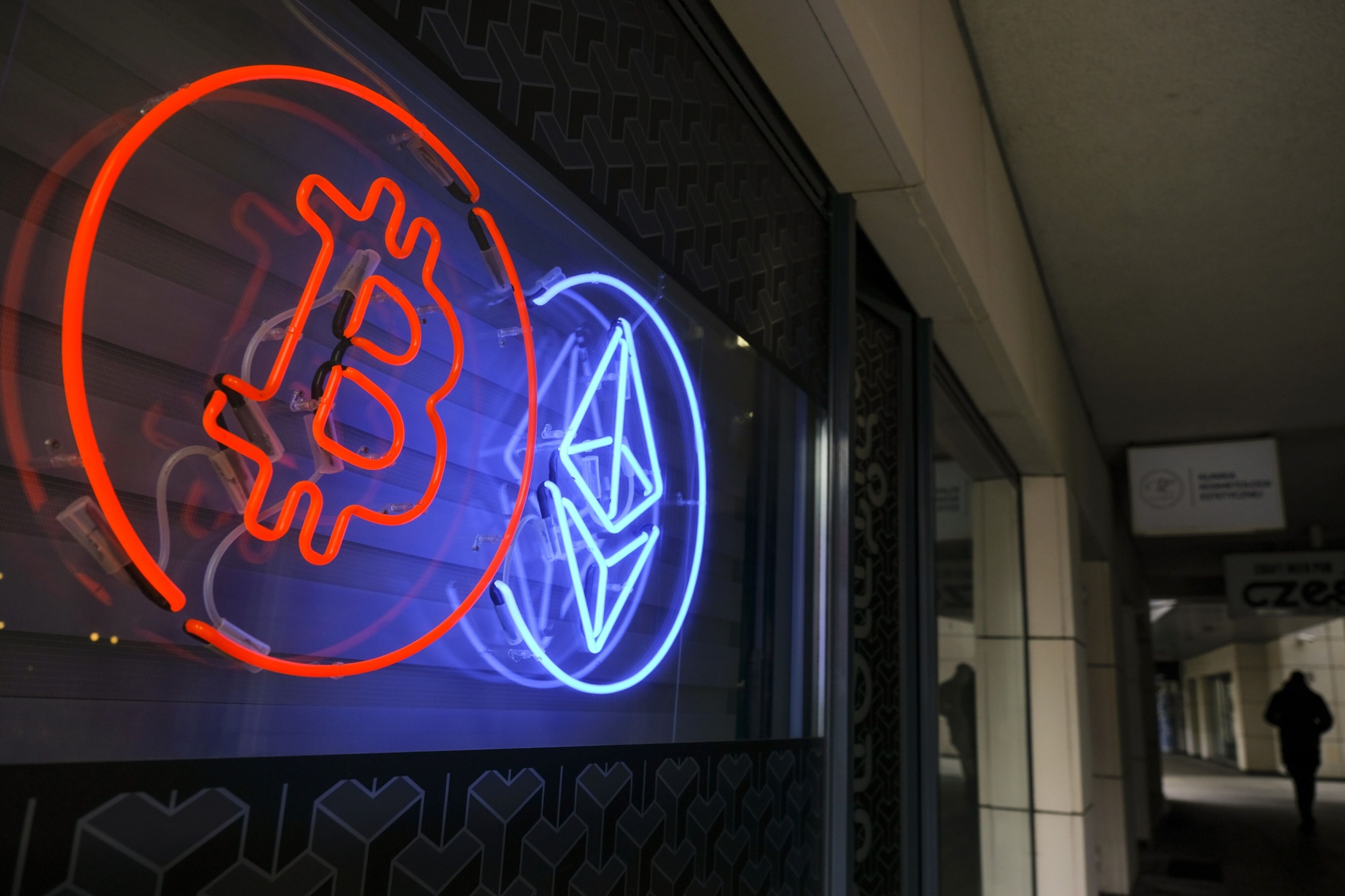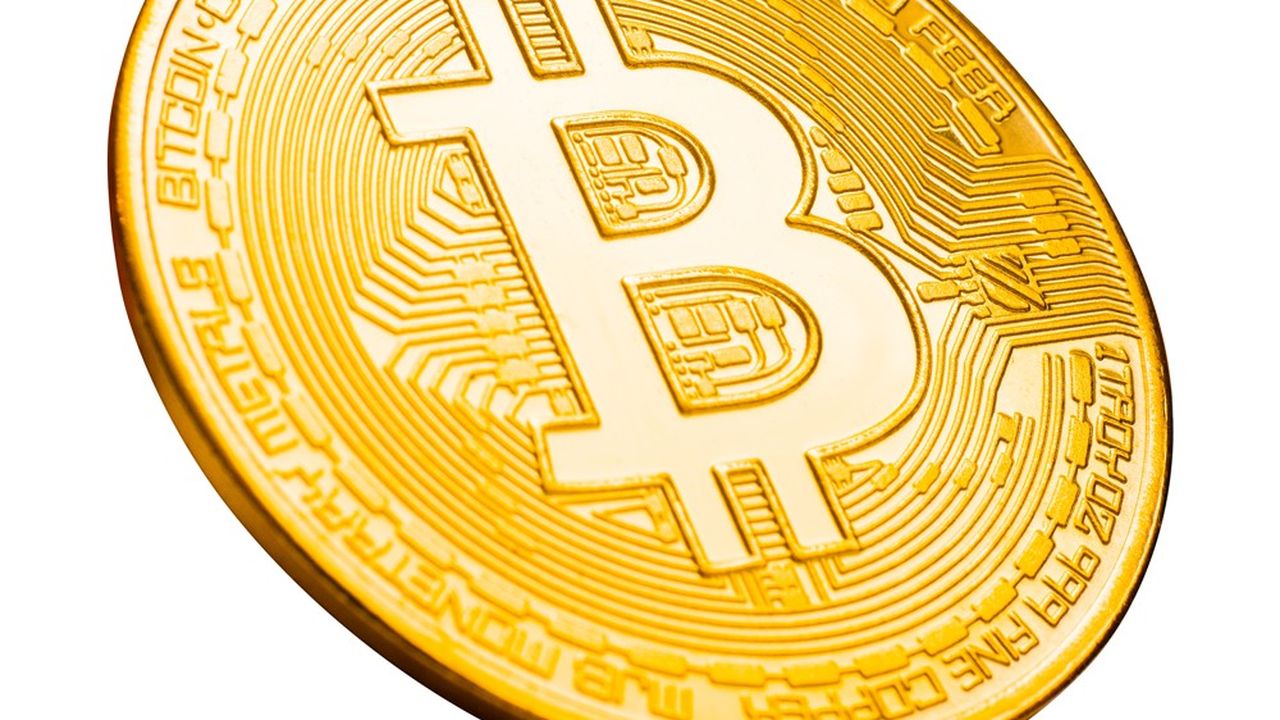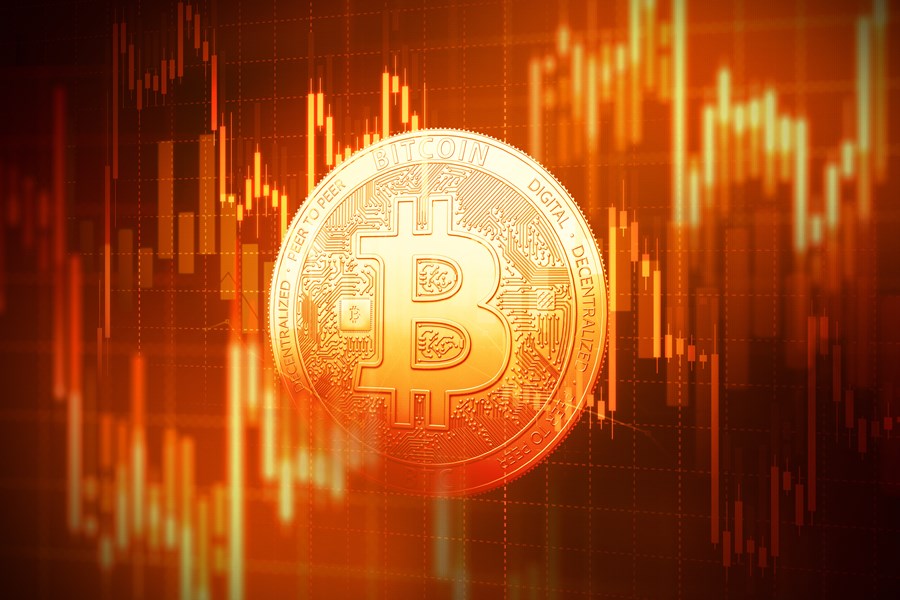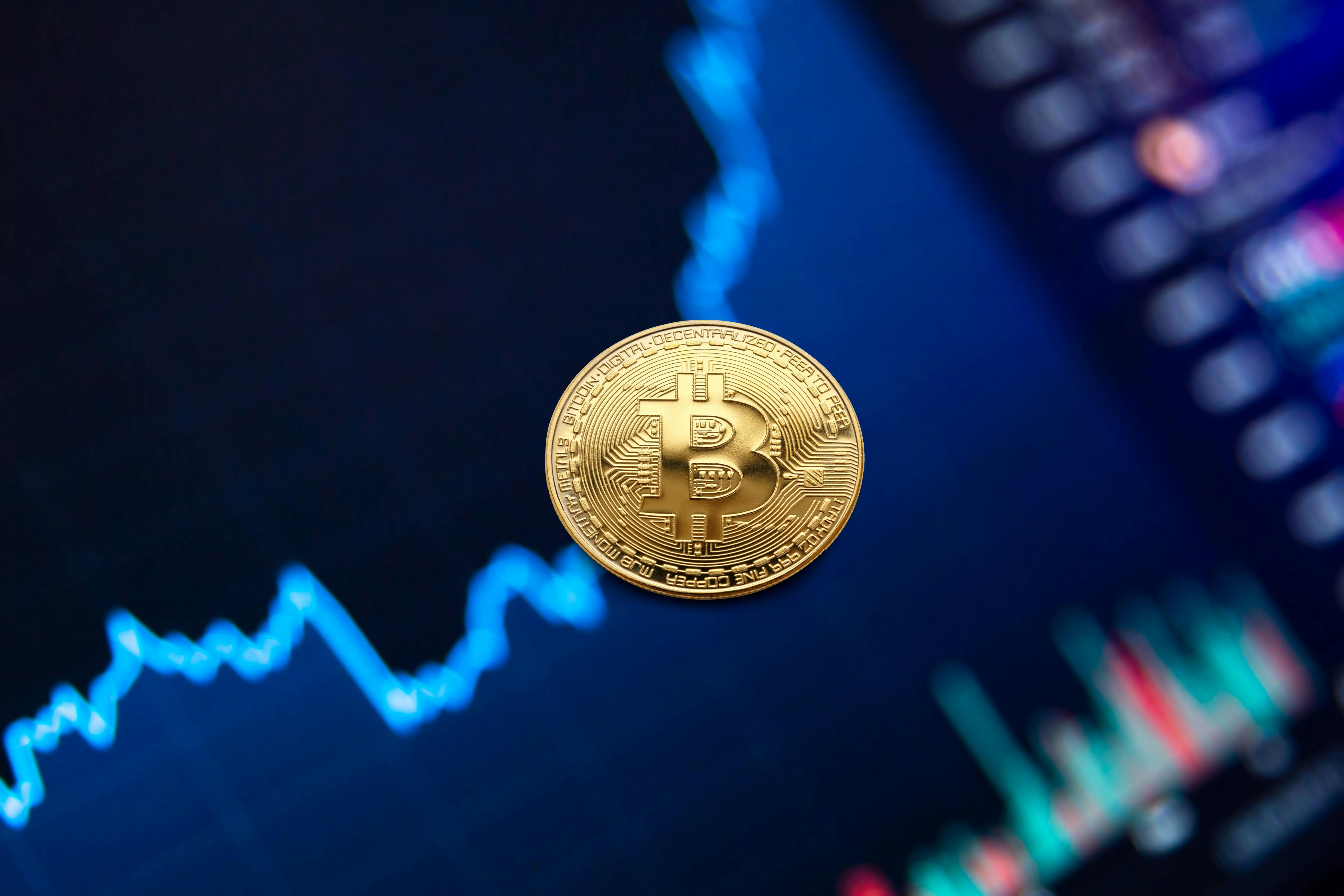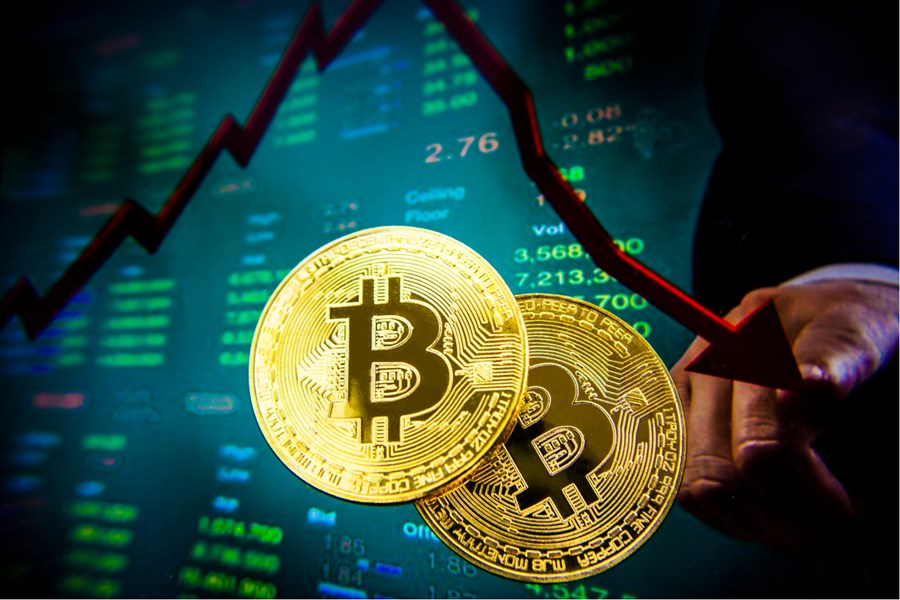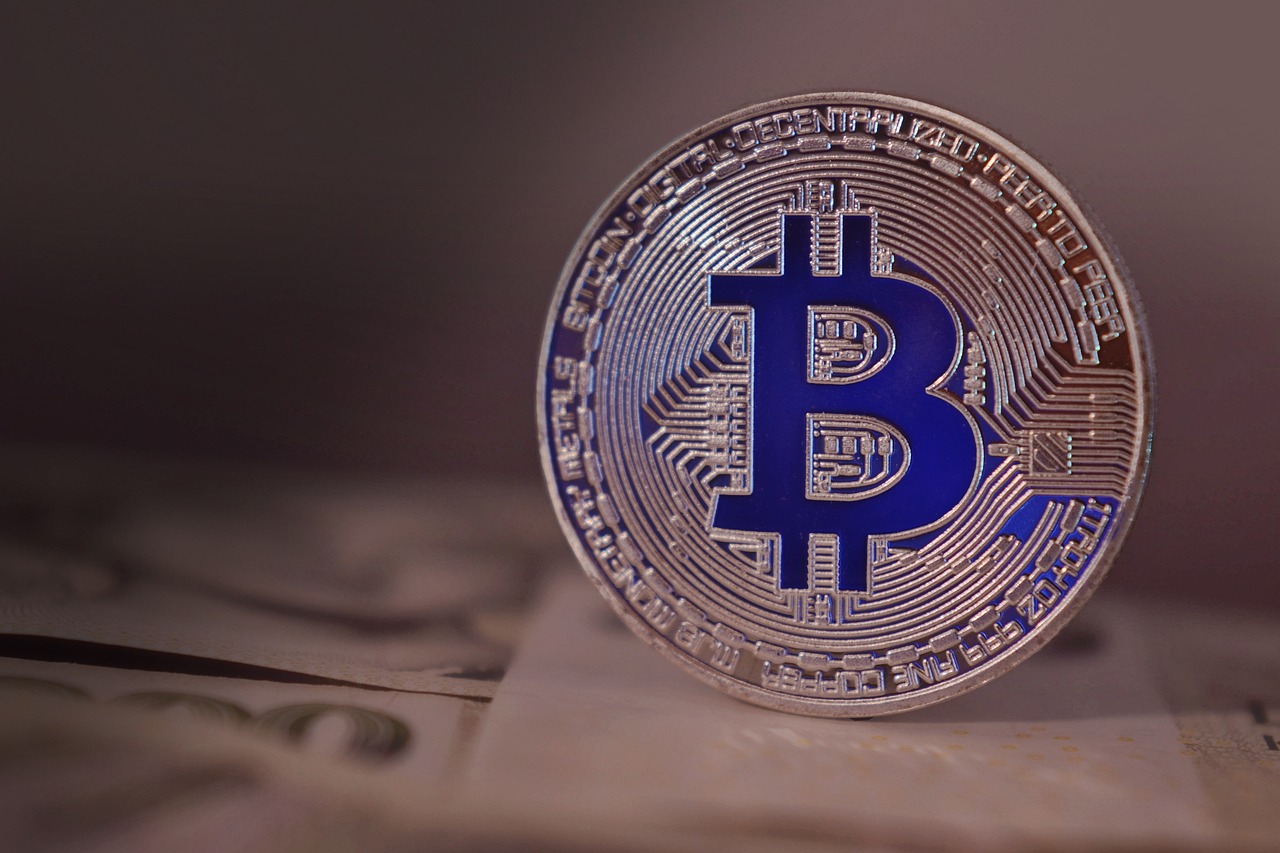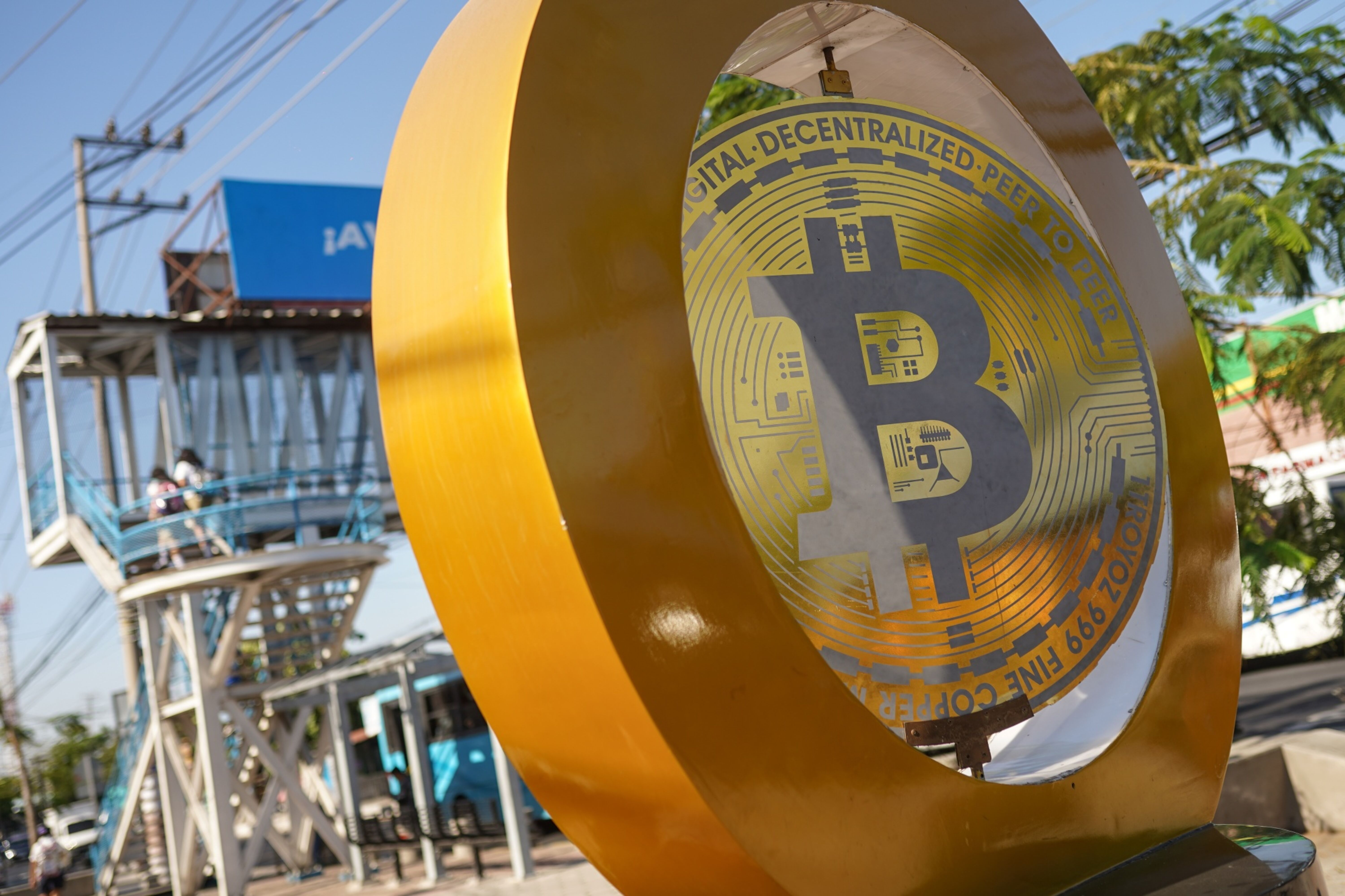

FTX May Have Delivered A Watershed Moment To Digital Assets, The Crypto Ecosystem, Regulation, And Crypto Ventures
Summary Whether the FTX disaster was the result of a bad actor, a bad entity, a willful competitor, blind incompetence, or a combination of all these, the result is the same. Many institutions will now likely view crypto as toxic until it is brought onshore and regulated. New regulations will surely emerge but may not be the ones people have been hoping for. We don’t see this bringing on the demise of Bitcoin and crypto but we do see it significantly altering their trajectory. Co-authored by Steven Moffitt, PhD “ It’s really important that the industry is able to get through this in one piece. It’s not going to be good for anyone long-term if we have real pain, if we have real blowouts. It’s not fair to customers. ” Sam Bankman-Fried in an interview with CNBC explaining why he previously gave millions in loans to help struggling crypto firms Intro In a stunningly quick upheaval, the financial empire and multi-billion-dollar personal fortune of Sam Bankman-Fried (aka SBF) collapsed. FTX, formerly the world’s second-largest crypto exchange, its sister company Alameda Research, and some 130 related entities all filed for bankruptcy on November 11th. The native crypto token FTT ( FTT-USD ), issued by FTX and selling at more than $20 each just days prior, became essentially worthless. Billions in corporate value, token value, crypto, and real money either disappeared or evaporated within hours. Hundreds of employees dispersed, and an array of lawsuits & investigations are already underway. Complicating matters for US customers and investors hoping to recover any of their assets is the fact that the tragedy played out almost entirely beyond US shores in Hong Kong, Antigua & Barbuda, and the Bahamas. An appointed bankruptcy expert has taken over as CEO and will take on the responsibility of assessing the damage, sorting out the mess, overseeing the liquidation, and determining whether customers, debtors, employees, or any others will recover any of their assets. They can expect to wait months, if not years to find out. In the bankruptcy filing for FTX, the newly appointed CEO remarked "Never in my career have I seen such a complete failure of corporate controls and such a complete absence of trustworthy financial information as occurred here. From compromised systems integrity and faulty regulatory oversight abroad to the concentration of control in the hands of a very small group of inexperienced, unsophisticated and potentially compromised individuals, this situation is unprecedented." While giving Hollywood a gift of one of the best made-for-tv scripts since Bernie Madoff, the FTX saga represents yet another major shock to the digital asset world, already suffering from one of its worst declines ever. While media outlets are jumping on the story to reveal the juicy tidbits of SBFs unusual lifestyle, this article aims to go past the headlines and offer perspectives on what investors might expect. Astute investors understand that flameouts in financial markets will occur from time to time and recognize that superior investing opportunities can often emerge from market crises. In addition, they understand that some of the largest upsides in financial assets have occurred following large downward moves. But they can also focus on the risks. We examine this situation in this context. Riskless vs. Reckless Sam Bankman-Fried’s initial foray into crypto trading (after only a few years of post-college work experience at a trading firm) was to exploit anomalies in global crypto prices through his own trading operation at Alameda Research. The arbitrage he engaged in was a form of price arbitrage that is performed every day by banks, trading houses, brokers, hedge funds, and others in the US. It is a golden opportunity for a computer geek with a knowledge of international exchanges and access to a great deal of capital, especially in nascent, unregulated markets like cryptos that are globally dispersed and in 2017-18 still somewhat inefficient. In an interview with CNBC , SBF explained that in 2018 there was a rapidly growing interest in cryptos from Japan and Korea, creating prices that were higher than those in the US by as much as 10% or more. He reasoned that he could throw $10 million at an arbitrage strategy whereby he purchased on a US exchange, and then sold in Japan, he could walk away with a million in profit for each transaction. Supposedly, he was able to execute this technique to the tune of $20 million or more in profit. (Where he got the original $10 million bankroll is unknown.) Buying assets on one exchange and selling them on another can essentially be riskless, assuming it is done simultaneously and that there are no counterparty or settlement risks to contend with. There would, however, be a cost for the necessary currency conversions. This can work for a while in inefficient markets, but other traders would ultimately figure that out as well and once they did, the trade would essentially become “arbbed out”, driving the profits down to pennies on the dollar. The fact that Alameda started having big trading losses when crypto prices began falling suggests that it moved on from riskless arbitrage to higher-risk trading with heavy leverage. The details of how SBF's initial trading operation at Alameda Research blossomed into billions have not yet been fully revealed. Nonetheless, it reportedly did, and in just a few years. The capital necessary to support all that trading would have been immense. It’s understood that SBF created the FTX exchange, at least in part, to generate capital to feed Alameda’s trading machine and probably also to give his trading company a captive venue through which to trade. In return, Alameda produced the lion’s share of trading activity on FTX. This cozy relationship all but assured that the fate of both FTX and Alameda trading would be completely entwined – something US regulations would never have allowed. In addition, Alameda Research held most of the FTT tokens – the native crypto one needs to have in order to trade on the FTX exchange. This is where value gets created out of thin air throughout the crypto world (and elsewhere!). The token costs almost nothing to create but is required for trading on the FTX exchange. Think of it as a membership cost for an exclusive club. As trading expands, club membership increases in value. Alameda Research does most of the trading on FTX and holds most of the tokens. As they increase in value, it then uses those tokens as collateral for loans to conduct more highly leveraged trades. Bear in mind that “ Owners of FTT were promised lower trading costs and the ability to earn interest and rewards like waived blockchain fees. While investors can profit when FTT and other coins increase in value, they’re largely unregulated and are particularly susceptible to market downturns”. In other words, the FTT token is created by FTX and its value is not backed by any real assets. FTX tokens vs. seats on the NYSE While it would sound to anyone like a house of cards, it is not at all unprecedented, even in the traditional asset world. To trade on the New York Stock Exchange before it was bought out in 2006, one needed to own a “seat”. A seat on the NYSE was roughly the equivalent of a token on the FTX, endowing its owner with the right to trade on the exchange. NYSE seats were initiated in 1869 at a price of $4000. In 2005, seats peaked at $3.57 million. It’s very likely that one could have financed a seat through a bank or other institution, given that it provided you with a venue that enabled you to make a great deal of money. Taxi medallions in key US cities worked the same way and became worth hundreds of thousands each. Banks provided loans against those as well. How do these membership schemes end? Great for some – terrible for others. NYSE seat owners were very fortunate. In 2006, the NYSE went public in an IPO. The seat owners received 80,177 shares in the new public company, $300,000 cash, and $70,571 in dividends. On the other hand, taxi medallions crashed as a result of Uber and Lyft. In Boston, medallions went from $700k in 2014 to $40k in 2018. In Chicago, they went from $385k to 30k. And in New York, they went from a peak of over a million dollars each to as low as $136k. Many taxi companies in NY went bankrupt and one lender had to write off $70 million in bad loans against medallions. A similar practice in the crypto-corporate world is playing out now in the court system for Ripple Labs. The SEC is claiming that Ripple’s token ( XRP-USD ) is essentially equity in the company and merely a contrivance to avoid securities regulation. The result of this case will have major implications on the use of crypto tokens and FTX did not help Ripple’s case. There is more to the story. To spice things up for FTX, rival exchange Binance (BNB-USD) (the largest crypto exchange in the world) became entangled with FTX and Alameda as well. Despite being FTX’s largest competitor, Binance apparently also lent money (at least half a billion) to Alameda Research and was given FTT tokens as collateral.) When the value of the tokens become questionable to Binance, they tried to sell them back to Alameda and it was the resulting liquidity crunch on Alameda that proved its undoing. What happened to SBF’s two firms seems to have been a classic run on FTX’s assets. In addition, SBF was said to have used customer deposits from FTX accounts to fund activities at Alameda Research. The customers thus became hapless victims as both Alameda and FTX began to fail. Reasons for the Collapse At some point, Binance got a whiff that the value of the FTT token was potentially inflated and tried to protect its interests by selling it back to Alameda. This alerted others who immediately jumped in on the selling action, resulting in a cascade failure that may have taken just hours to bring FTX and Alameda crashing down. What brought down SBF and the house of FTX was therefore a combination of malfeasance, ignorance, incompetence, and overconfidence, coupled with speculation on an asset with questionable underlying value, heavily leveraged trading, competitive rivalry, and the illicit use of customer funds. The investigations are expected to center on “ a complete failure of corporate controls and…a complete absence of trustworthy financial information,” in the words of the new CEO from his court filing. As he put it “If the underlying instrument is a crypto asset with no firm assets behind it, and the markets on which it trades are in different countries and largely unregulated, riskless can become reckless very quickly.” To throw billions at it was folly. To throw unauthorized customer money at it is at best irresponsible and at worst fraud, at least by US legal standards. FTX was really acting as a broker-dealer rather than an exchange, but outside the US, that distinction escapes regulatory scrutiny as well. The impact for Bitcoin and other digital assets Crypto hardcores will no doubt try to convince themselves that the demise of FTX was an isolated event that represents a natural consequence of FTX’s dubious structure and practices. That may be wishful thinking. There will certainly be collateral damage to other players in the crypto game. Crypto lending firm Genesis Global Capital has already put investors on alert that it has to raise capital as a result of losses to FTX and that could also affect their parent company DCG (Digital Currency Group), which also owns the Grayscale Bitcoin Trust ( GBTC ). Word of other losses is also trickling in. Financial Advisor Magazine reports that “Kevin Zhou, co-founder of hedge fund Galois Capital, said roughly half of its capital was stuck on FTX, according to the Financial Times. Travis Kling, who managed money for Point72 Asset Management before starting a crypto fund, said a large majority of his firm Ikigai’s assets are on the bankrupt platform. Wintermute, one of the largest market makers, said it has $55 million on FTX.” Even if the FTX contagion is manageable, the bigger issue here is the loss of crypto credibility. FTX just adds to a long line of crypto hacks, missteps, frauds, and other painful events. When added to the massive price declines of 2022, the uncertain future of Ethereum’s ( ETH-USD ) change to proof-of-stake, and the vacuum in regulation, this could very well be a watershed moment in the fabled crypto story. Investors must keep in mind that while blockchain and cryptographic technology are real and practical, specific tokens, coins, and cryptos like Bitcoin (BTC-USD) are simply applications built on that technology and are driven purely by their acceptance in the marketplace. It is no different in that regard from the inception of the Internet, where there were notable flameouts in the early days. Bitcoin’s future is by no means assured and with numerous potential CBDCs (Central Bank Digital Currencies) under development around the world, it could become just one of many digital currencies or could fade out entirely. We also know that when a market crashes, the safest investments are generally ones that had solid performance before the crash and that BTC and ETH may hold the most promise of remaining alive and regaining their upward momentum. Therefore, we expect the FTX affair to put downward pressure on market valuations for all cryptos. FTX also demonstrates how rapidly a token can drop to zero value. That will impress upon many people that they may not be able to get out with even partial loss in the event of a collapse and this may portend smaller investments by those inclined to speculate. A major issue is that many institutions, who were finally warming to the idea of a crypto allocation, will now likely walk away. Without institutional players, the prices are likely to languish at best. Moreover, since institutional adoption was assumed to have increased the price correlation between equities and Bitcoin, that trend may weaken as cryptos decouple somewhat from equities. Institutions that are preoccupied with inflation and a possible upcoming recession are going to be a lot less likely to add more risk to their portfolios. Our prognosis (and it is just our educated opinion of course) is that Bitcoin will likely survive for some time out of sheer momentum and determination but will not reach the vaunted heights many adopters have long hoped for and will entertain a new trajectory going forward. Hardcore crypto adherents will not likely sell at current prices, but those who ventured in during the last year will likely consider taking their tax losses and moving on. In the near term, we would expect continued consolidation well into 2023. More importantly, we see the FTX disaster as a watershed moment in the evolution of digital assets that will change the general public’s approach to digital assets. On top of yet another price decline of well more than 50% from its previous high, the loss of credibility here is exacerbated by several factors: Sam Bankman-Fried was not a member of the financial “establishment”– he was a Gen-Z crypto fan who lobbied extensively on behalf of the crypto community. “Once bitten – twice shy”. A great many crypto fans will now have been burned, some quite heavily. Few of those will blindly jump on the bandwagon again, even if cryptos take off again. Mass loss aversion will cause many to be looking just to get even and get out. The number of hacks and other crypto disasters is now too large to ignore. It should be clear to many now that crypto without regulation is simply too dangerous. Without the momentum behind institutional acceptance, crypto will need to find new supporters. Where will they come from? The existential question is now whether crypto can thrive in a regulated environment because the evidence against its ability to thrive in unregulated environments is now becoming overwhelming. Nonetheless, it is important to point out that crypto and blockchain technologies are still considered both valid and valuable. We expect that safe and legitimate applications for the technology can now take on a higher profile. The impact on regulation Calls for increased regulation are expectedly spewing from the usual sources. Elizabeth Warren is already saying that tougher rules are needed to deal with the “smoke and mirrors” prevalent in the crypto space. For that matter, even SBF, himself, was lobbying for increased regulation. That, however, may backfire to a degree as SBF's credibility is now shot to pieces and Congress might now view more liberal rules in the US as simply legitimizing some of the bad practices in the crypto industry. Nonetheless, the system begs to be fixed. Jason Zweig of the Wall Street Journal said “SBF may be at the center of what went wrong, but he didn’t act alone. Behind him lies a vast ecosystem of fantasy and fakery. It’s called the investing business. If we’re going to point fingers, let’s be sure we aim at all the right targets.” We believe new crypto regulations will come out of this but that they will not be what the industry is hoping for in terms of new approvals. If anything, it will be an overreaction to tighten regulations and audit requirements on existing vehicles while abandoning any further approvals of any kind until they truly get to the bottom of FTX first, which will take a while. It’s going to be more difficult for the industry to get past that image now. The impact on the crypto ecosystem VCs came away with lots of egg on their faces after losing money on FTX investments. Money to back the FTX exchange came in from the biggest names among US venture capital firms, who apparently had so many dollar signs in their eyes, they couldn’t see the FTX balance sheet very clearly. “ Dozens of the world’s leading investment firms , including Sequoia Capital, Singapore’s state-owned investment company Temasek, the Ontario Teachers’ Pension Plan, SoftBank Group Corp., and hedge funds Third Point and Tiger Global, showered SBF with money.” But in the scheme of things, it was still a relatively small hit to their massive investments in the crypto ecosystem. In addition, it was mostly investor money, not theirs, and to make money in the future from lucrative fees, they will keep investing. Sequoia had the presence of mind to apologize to investors and promise better due diligence in the future (though at the same time passing the blame off on SBF for misrepresenting FTX.) (Sorry, but that should be one of those things that good due diligence is supposed to uncover.) Meanwhile, Sequoia told its investors that it would focus more on public equities in the crypto space and offered to swap FTX losers into a new fund with less FTX-style exposure. Apparently, 95% took the deal. Investors in crypto-related ventures and private equity are likely to be a bit more gun-shy but the space will still likely continue to see new money pour into crypto and blockchain ventures that show promise, have more viable business models, and are run by more established players. The qualifications of being domiciled in the US and having reputable auditors should also take on more weight now. Institutions, however, that had bought crypto (or worse, invested in FTX) won’t likely be as willing to touch another coin or token and those who were considering crypto will now very likely enter a moratorium on investing further until the dust settles on FTX. We suspect many will walk away from crypto altogether now. What pension fund manager would want to risk their job by bringing up the idea of investing in crypto right now? Let’s face it. The parts of the crypto ecosystem that are not based on actual business models are based almost entirely on blind trust and a storied narrative. That trust has taken numerous hits to date and survived but just took another one with FTX and that will take a while to recover from. Bitcoin was built on a narrative that it was to become a worldwide currency. That hasn’t happened yet. So, it has maintained what value it still has based on its identity as a store of value – and a highly volatile and speculative one at that. It’s difficult to find a silver lining in the FTX saga for Bitcoin other than the fact that it hasn’t crashed. That isn’t exactly a lasting testimonial. Parts of the crypto ecosystem will certainly suffer from the loss of credibility that resulted from the fall of FTX. Crypto brokers and exchanges will suffer. Miners are already in the doldrums. Institutions will likely shelve any plans to add crypto for a while. We wouldn’t be surprised to see some crypto players fail or consolidate if the prolonged price weakness continues into next year. Aspects of the ecosystem that relate to viable products and services should weather this better. This may be where the crypto world seriously separates the wheat from the chaff on digital coins and tokens. Chart perspective For a long-term perspective, we include a chart below of $BTC:USD from inception through November 2022, as shown below. We do not see any major clues to future price based on Bitcoin’s volatile price history but we do note that it could fall below $7500 and still essentially be considered in a long-term uptrend. Unfortunately, that leaves the crypto vulnerable to another 50% drop from here before enabling technicians to conclude that the trend has finally broken. $BTC:USD (StockCharts.com) Meanwhile, shares of Bitcoin miners are showing abandonment as shown here on Riot Blockchain ( RIOT ). RIOT (Stockcharts.com) Optimists might say that this suggests capitulation on the part of investors, which may be somewhat true. But capitulation on companies with solid business models and fundamentals is different than capitulation on companies built on highly questionable fundamentals. Some might argue that cryptos are in something of a death spiral, and it would be hard to argue that. Our feeling is that while not a death spiral for Bitcoin or crypto just yet, it may prove to be one for entities that are incurring costs and realizing insufficient revenue or asset appreciation to justify those costs. How long can miners continue to mint Bitcoin at current prices and what is their threshold for throwing in the towel? We do believe that crypto and blockchain technology will survive the latest carnage, but that many frivolous coins and tokens will not. We see a strong parallel between crypto today and the Internet of the early 2000s. In the same way that the Internet had its watershed moment and came out stronger in the end, we see similar possibilities for crypto. But trying to pick the bottom and the right vehicle may require as much luck as skill. The impact on alternative investing We’ve been studying the greater field of alternatives for some time and we define alternatives as pretty much any type of formal investment outside of regulated securities as well as some regulated securities that actually are alternatives. We see the major categories of alternatives as real estate, collectibles, cryptos, other digitals (NFTs), crowdsourcing, private debt and equity, and venture capital. The first five of these categories are the ones most broadly available to individual investors and they are already huge. We all know the growth story behind cryptos and NFTs (despite the currently weak environment). Spurred on by the JOBS Act of 2016, collectibles and crowdsourcing have really picked up steam. Fractional investing is expanding rapidly for high-ticket items and the minimums on private equity and venture capital are dropping to where many more investors can take part in those areas as well. In short, the alternatives markets still have enormous growth potential and are held back primarily due to the lack of regulation and the absence of available education & resources. In addition, investment advisors cannot get paid on many alternatives and they can have considerable legal & compliance risks if they offer them. Consequently, the advisor world avoids alternatives. This, however, will change over time. The FTX fiasco, coupled with the severe weakness in cryptos and NFTs right now, may push more investors toward other alternatives like real estate and collectibles. If anything, we see FTX providing constructive lessons for other alternatives and for the SEC in terms of bringing them under the regulatory umbrella.



